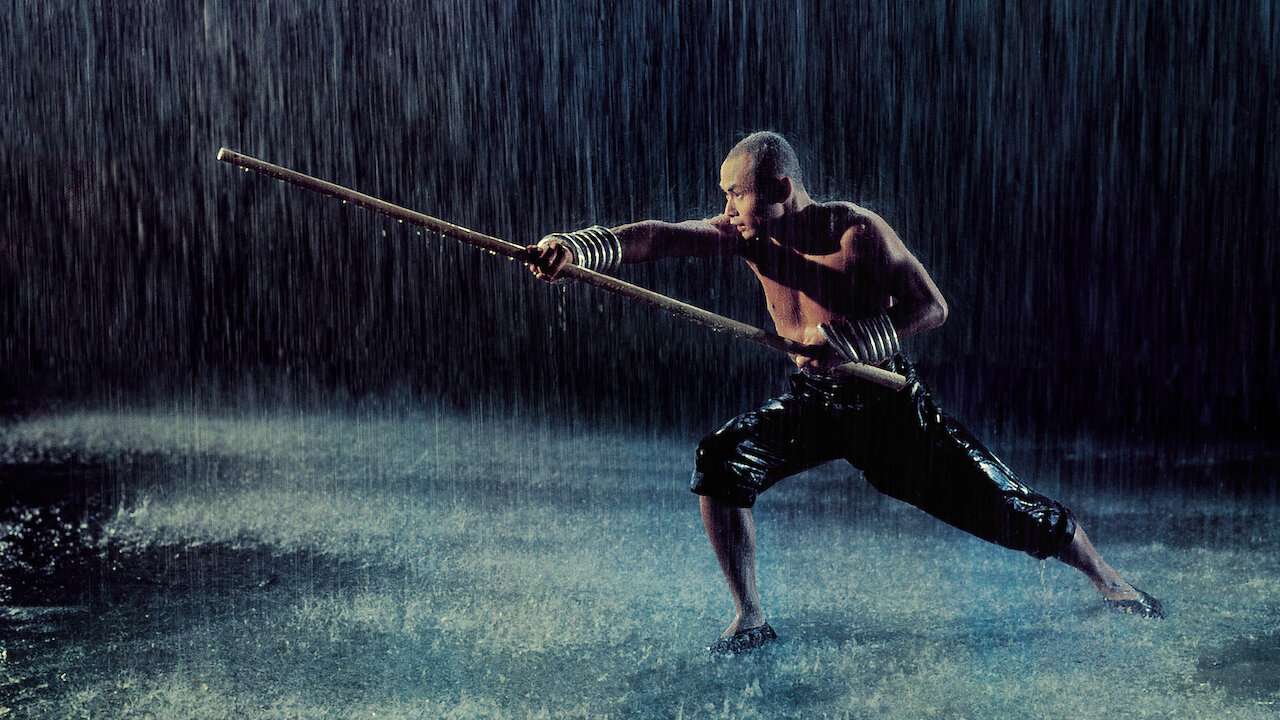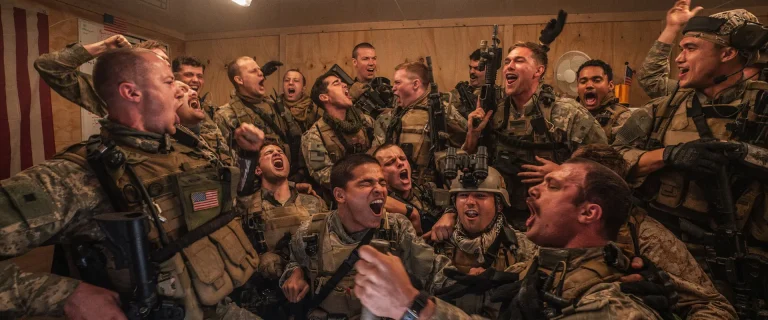Popularised by Joseph Campbell, the ‘Hero’s Journey’ posits a malleable structure to a hero’s quest to fulfill their purpose. There is definite doubt that writer Ni Kuang and director Lau Kar-Leung utilized this structure knowingly. The template of the journey is rooted in the history of our storytelling and, therefore, found in many forms in all media. This includes cinema, and it most definitely consists of the influential Shaw Brothers film “The 36th Chamber of Shaolin.” As mentioned above, ‘The Hero’s Journey’ is a fluid format, wherein its elements can be twisted in the structure to fit the narrative. Kuang adapts it the same way, creating a solid premise from a very sparse journey.
Liu Yude (Gordon Liu) arrives at the Shaolin Temple, having heard they can teach him Kung-fu. He has a deeper purpose in learning it, but the major portion of the film spends its time deliberately and delicately unraveling his training in the martial arts. Yude, rechristened as Monk San Te, must fight through the 35 chambers within the temple in order to be anointed as a master. Much like the Hero’s Journey itself, the structure of this second act is neatly divided into displaying each skill San Te acquires as he climbs through the ranks. It is the highlight around which the rest of the film is built, yet Kuang and Kar-Leung have greater depths to delve into the screenplay.
The film’s first act details the incidents that drove Liu to join the Shaolin Monastery. In the opening, we witness Liu Yude in his Known world (per Campbell’s template) as a young student in a village oppressed by the ruling Manchu. Yude’s first call to arms comes in the form of his activist teacher, who enrolled him and his friends in a rebellion against the Manchu. It decides his later fate and calls for adventure, as the uprising is struck down by the full force of the Manchu General Tien Ta (Lo-Lieh), leaving him to escape. Despite being a neutral party in the conflict, Yude is made aware that the Monks in the Shaolin Temple and their kung fu could help him get his revenge. In this case, the martial arts and artists become the supernatural aid with which our Hero crosses the threshold into the world of the unknown.

This is where the application of the structure is almost turned on its head. Yude finds helpers and mentors; he also clashes with the Disciplinary Chief of the Monks as he rises the ranks. Adopting the name of San Te, Yude finds a home amidst the Shaolin Temple and is urged not to leave. It isn’t that his training is easy. Lau Kar-leung really dives deep into the makings of San Te as a Kung-fu master. Usually, in a scenario such as this, a filmmaker would constrict time and space using montages to detail San Te’s training. However, Lau Kar-leung, Ni Kuang, and his editors, Geung Hing Lung and Li Yen-hai, give this second act a fascinating flow that makes it such an influential aspect of the film.
Each chamber that Sun Te challenges is given ample breathing room to showcase how he acquires his skills and how difficult they are to attain. Of course, each sequence grows shorter as the narrative progresses, but things do not come easily for the protagonist. Sun Te suffers at least one failure in every chamber, showcasing that mastering one doesn’t mean mastering all.
It’s almost fascinating how the duality of the character and plot plays along. To climb up the ranks of the chambers and master Kung-fu, the protagonist is urged to let go of his anger and calm down. Sun Te is forced to think about the purpose of each lesson and how to solve it in order to succeed. However, ironically, the driving force that continues to allow him to accomplish each task is his desire to channel Kung-fu for revenge on the Manchurian overlords.
It’s an ingenious twist on the old tale, with Sun Te adopting his new home yet desiring to cross the threshold once more to fulfill his quest. Here, the protagonist returns to the ordinary world before the goal is accomplished and becomes part of his atonement. For some, the third act would then feel comparatively tame. The magnificence of the second act is in its structure and how it is presented. Though the entire film is visually grand, with impeccable set design and costuming, it is the second act that truly stands out here as well.
Each of the stages of the chambers is built up gloriously. The cinematography captures the contrast between the calm Monastery and the training with brilliance. The camera and editing stick close to Gordon Liu, allowing him and the rest of the martial artists to display their incredible skills. Sound design is a special forte of Shaw Brothers films, with the shiny silver weaponry clashing and fists and kicks furiously beating against objects and each other.
That immersive effect is retained in the climactic fight, but to get there, Sun Te must take another journey when he returns home. With the revolutionaries all but stomped out, Sun Te, like his former teacher, becomes an activist to recruit a motley crew for rebellion. Thankfully, the third act allows enough space for Gordon Liu to react to the changes in his village and ramp up the melodrama from the opening sequences.
Lau Kar-leung also displays his genius in the structure of the film. Viewers witness as Sun Te fights the Manchu and how each of the chamber skills is employed in action. The crafting of the scenes and images is clean and crisp, never needing to cut back to the training to pander to the audience. The visual connection is made subtextually by how terrifically the final fight is captured.
As the film ends, the hero’s journey takes that turn with Sun Te returning from home back to his new home at the monastery. Here, he establishes the 36th chamber as a means to allow a new generation of ordinary men to learn the Martial Arts of the Shaolin. It’s an extraordinary full circle Kuang and Kar-leung use to highlight the film’s themes. By preparing those outside the world of the Shaolin, Sun Te empowers them to protect their lands from further invasion. In many ways, it is the most heroic fulfillment of this hero’s journey.
Also, Read: The 6 Essential Bruce Lee Movies
The 36th Chamber of Shaolin (1978) Movie Information
External Link: Rotten Tomatoes
Rating: R
Genre: Action
Original Language: Chinese
Director: Chia-Liang Liu
Producer: Mona Fong, Run Run Shaw
Writer: Kuang Ni
Runtime: 1h 53m
Production Co: Shaw Brothers




![Lens [2017] – A Hard-Hitting Commentary on Cyber-Harassment](https://79468c92.delivery.rocketcdn.me/wp-content/uploads/2017/05/lens-film-768x402.jpg)

![The Peanuts Movie [2015]: A kite-chase down nostalgia lane!](https://79468c92.delivery.rocketcdn.me/wp-content/uploads/2015/12/PeanutsMovieNewB06-16-15.jpg)
